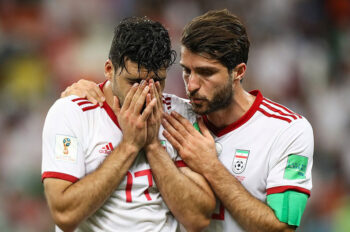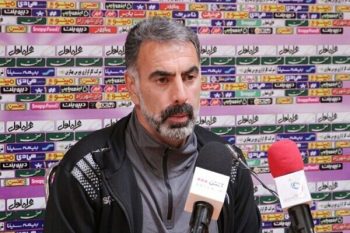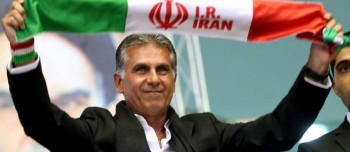Asian football in European hands

 ESPN – KUALA LUMPUR, It is a speech that has echoed around many an Asian airport arrivals hall. The most recent speaker was Jose Camacho, the location was Beijing and the microphones came from Chinese broadcasters pushing to get the first words of their new, if slightly jetlagged, national team coach all against a backdrop of a few fans and curious tourists.
ESPN – KUALA LUMPUR, It is a speech that has echoed around many an Asian airport arrivals hall. The most recent speaker was Jose Camacho, the location was Beijing and the microphones came from Chinese broadcasters pushing to get the first words of their new, if slightly jetlagged, national team coach all against a backdrop of a few fans and curious tourists.
“We are happy to be here,” said the former Spain and Real Madrid boss. “My coaching team and I are proud to join the Chinese national squad. Our goal for the moment is to try to qualify for the World Cup finals in Brazil. But we have a long-term plan for the future.”
They often have long-term plans to help revolutionise local football but rarely does anything happen in that field due to various constraints, whether they be of the time, federation, local clubs or cultural variety or a combination of all. Not that it is noticed as the international brigade is employed for one reason and one reason only ahead of qualification for the World Cup. Foreign coaches are seen as having the right wink or nod that gets the bouncers guarding access to the exclusive but cosmopolitan club that only opens once every four years to lift the rope and step aside. Or if that is not possible, at least they can move the team and fans closer to the front of the waiting line than ever before to dream of joining the party in the not-too-distant future.
Of the 20 Asian teams jostling for position ahead of the start of the group stage of qualification next month, only four – Syria, Uzbekistan and the two Koreas – currently have tacticians who didn’t have to study the national anthem upon taking their new jobs. It is quite a percentage.
As well as China, minnows and giants alike are led by coaches from far and wide but mostly Europe. Japan have Italian Alberto Zaccheroni, Holger Osieck is German and coaches Australia while big names such as Frank Rijkaard and Carlos Queiroz have the task of restoring big-name status to Saudi Arabia and Iran respectively. Then you have the south-east Asian trio of Thailand, Singapore and Indonesia led by Germans, Serbians and Dutchmen. Over in the west, Serbia’s Goran Tufegdzic leads Kuwait, Slovenia is represented by Srecko Katanec at the UAE, Lebanon has Germany’s Theo Bucker while Englishman Peter Taylor is getting to grips with Bahrain and Paul Le Guen is at Oman. The South American contingent is surprisingly small considering the number of Brazilian coaches at club level with only Sebastiao Lazaroni at Qatar confirmed, though Brazilian compatriot Zico is reportedly close to Iraq, incidentally, the homeland of Jordan boss Adnan Hamad.
Teams at both ends of the spectrum go global. It is not just a case of the weaker members in the five groups splashing the cash – and imports are obviously more expensive – in the hope of a glimpse of the global stage, or even a quick dance, but the continent’s leading nations also get in on the act in the hope that they will be strutting their stuff after most have gone home.
There are so many foreign coaches in Asia that it is hard to say whether they deliver the goods or not. For those nations that are dreaming of a first appearance at the World Cup, looking overseas does seem to help. All four Asian countries that have appeared once at the World Cup and not come very close to doing so since did so sans domestic boss. Mario Zagallo led UAE through qualification for Italia ’90 while more than one Brazilian was involved in Iraq’s sole appearance in 1986. With a combined total of 11 appearances between them at the World Cup you would expect Carlos Alberto Parreira and Bora Milutinovic to be involved too, and so they were. The Brazilian was with Kuwait to 1982 and the Serbian took China to East Asia 20 years later.
Of the six times Asian teams have progressed past the first round – Australia in 2006 was an Oceania representative – it can be deduced that success is spread more evenly between domestic and foreign coaches. If you take 2002 and home advantage out of the equation, of the four teams that have made the knockout stage on foreign soil, just one, Saudi Arabia in 1994, had foreign hands on the tiller. The success of South Korea and Japan in 2002 was repeated to a similar extent eight years later with local lads leading the charge.
That relative success hasn’t caused attitudes to shift. The federations in Tokyo and Seoul originally planned to go to South Africa with foreign coaches. Takeshi Okada was appointed in December 2007 due to Ivica Osim’s sudden and serious illness and while he led the Samurai Blue through qualification with ease, his position was never totally secure and a run of disastrous results in preparation would likely have cost him his job if there had been time, and obvious candidates, available.
Coach Huh Jung-Moo of Korea was appointed at the same time and was, at best, third-choice after rejections by Gerard Houllier and Mick McCarthy. In the end, he led Korea through a tough final group with flying colours but came close to the boot after a lacklustre start. In Asia, local coaches are just a few bad results away from dreaded calls from media and fans for a big-name foreign coach that often lead to the dreaded calls being made from the federation.
According to Japan’s 2002 coach Philippe Troussier, the Samurai Blue and Taeguk Warriors have developed to the extent that they once again need foreign coaches, not because they are better than locals but because an increasing number of their players play in foreign leagues.
“For the likes of Japan and Korea, it is not about competence as there are lots of good coaches. I think it comes from a consideration about foreign players mostly,” Troussier told ESPNsoccernet. “Being a coach is not only about what happens on the pitch. There are other factors to be considered. Your decisions must be respected. To have a foreign coach is important when you have 80-90% of your players playing in Europe like Japan has.
“When you play in Europe and you come home and meet a local coach, of course you respect them but it is impossible for local coaches to take control of players who play in England or Italy, how can he know about this? Only those with experience abroad can know. Perhaps some of the weaker teams need some foreign coaches to help the local coaches, share knowledge and experience.”
If Troussier’s theory is correct and top teams with a significant number of players in Europe, needing overseas coaches for their ability to work with those stars, and the smaller nations needing their experience and knowhow, it doesn’t leave much room for locals especially when some in-between such as Saudi Arabia and Iran are hiring the likes of Rijkaard and Queiroz.
Maybe the habit will be broken only when there are big-name Asian coaches with European experience under their belts – the best of both worlds. That is another article in itself but it not going to happen just yet. Asia may be the future of football but it puts its present in the hands of Europe.




